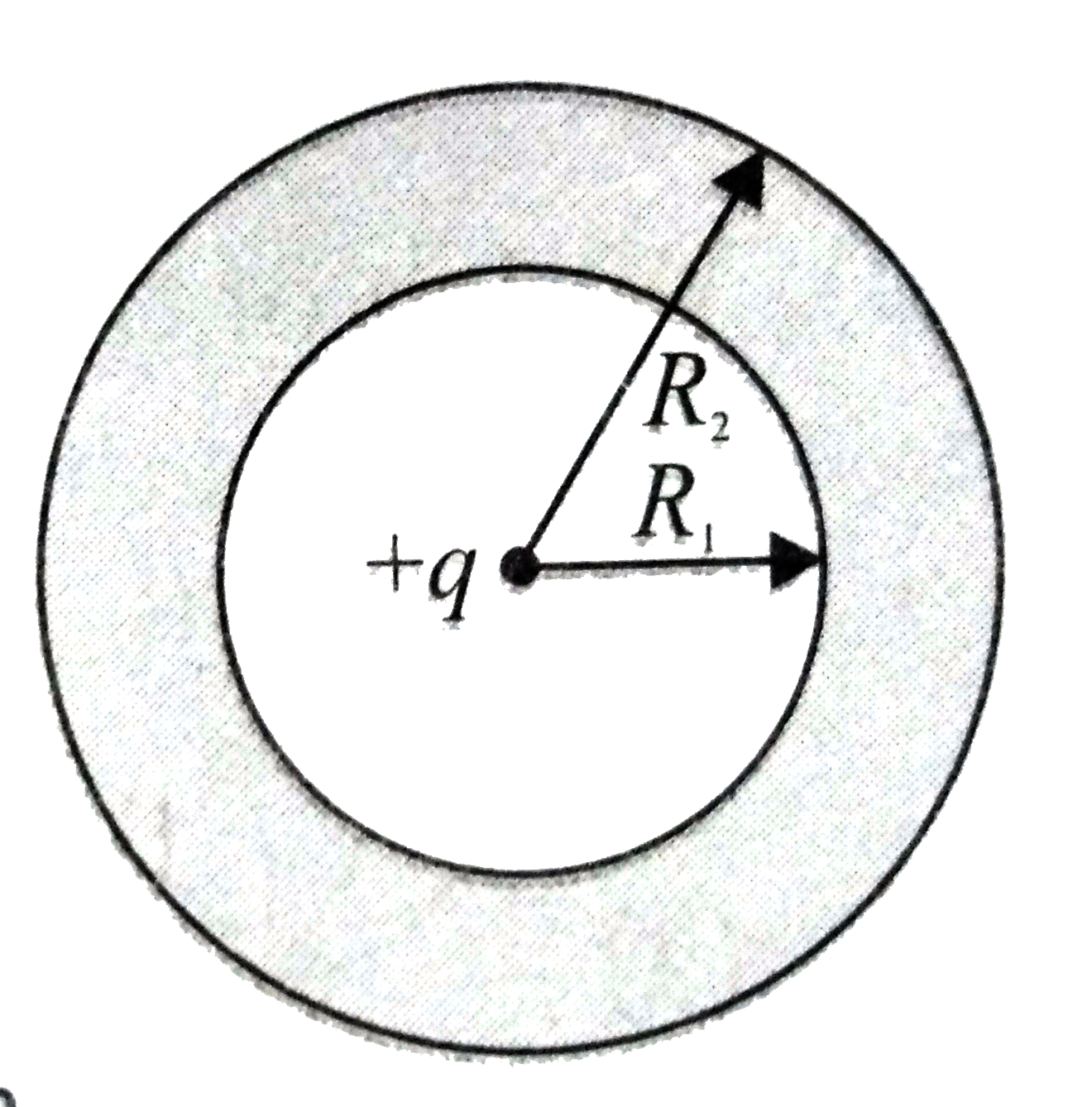A spherical conducting shell of inner radius and outer radius has a charge Q.
(a) A charge q is placed at the centre of the shell. What is the surface charge density on the inner and outer surfaces of the shell?
(b) Is the electric field inside a cavity (with no charge) zero, even if the shell is not spherical, but has any irregular shape? Explain.
(a)
(b) By Gauss’s law, the net charge on the inner surface enclosing the cavity (not having any charge) must be zero. For a cavity of arbitrary shape, this is not enough to claim that the electric field inside must be zero. The cavity may have positive and negative charges with total charge zero. To dispose of this possibility, take a closed loop, part of which is inside the cavity
along a field line and the rest inside the conductor. Since field inside the conductor is zero, this gives a net work done by the field in carrying a test charge over a closed loop. We know this is impossible for an electrostatic field. Hence, there are no field
lines inside the cavity (i.e., no field), and no charge on the inner surface of the conductor, whatever be its shape.
Topper's Solved these Questions
- ELECTROSTATIC POTENTIAL AND CAPACITANCE BOOK - NCERT BANGLISHCHAPTER - ELECTROSTATIC POTENTIAL AND CAPACITANCE EXERCISE - ADDITIONAL EXERCISES
1 Videos
- ELECTROSTATIC POTENTIAL AND CAPACITANCE BOOK - NCERT BANGLISHCHAPTER - ELECTROSTATIC POTENTIAL AND CAPACITANCE EXERCISE - ADDITIONAL EXERCISES
1 Videos
- ELECTROMAGNETIC WAVESBOOK - NCERT BANGLISHCHAPTER - ELECTROMAGNETIC WAVESEXERCISE - ADDITIONAL EXERCISES
5 Videos
- MAGNETISM AND MATTERBOOK - NCERT BANGLISHCHAPTER - MAGNETISM AND MATTEREXERCISE - Additional Exercises
12 Videos
Similar Questions
A spherical conducting shell of inner radius r1 and outer radius r2 has a charge Q.
(a) A charge q is placed at the center of the shell. What is the surface charge density on the inner and outer surfaces of the shell ?
(b) Is the electric field intensity inside a cavity (with no charge) zero, even if the shell is not spherical, but has any irregular shape ? Explain.
View SolutionA spherical conducting shell of inner radius r1 and outer radius r2 has a charge Q.
(a) A charge q is placed at the center of the shell. What is the surface charge density on the inner and outer surfaces of the shell ?
(b) Is the electric field intensity inside a cavity (with no charge) zero, even if the shell is not spherical, but has any irregular shape ? Explain.
View SolutionA spherical conducting shell of inner radius r1 and outer radius r2 has a charge Q.
A charge q is placed at the centre of the shell. Find out the surface charge density on the inner and outer surface of the shell.
Is the electric field inside a cavity (with no charge ) zero. Independent of the fact wheather the shell is spherical or not ? Explain.
View SolutionA spherical conducting shell of inner radius r1 and outer radius r2 has a charge Q.
Is the electric field inside a cavity (with no charge) zero, even if the shell is not spherical, but has any irregular shape ? Explain.
View SolutionA spherical conducting shell of inner radius R1 and outer radius R2 has charge Q. Now a charge q is placed inside the shell but not at centre then surface charge densities with their nature on inner and outer surfaces of shell are respectively.
View SolutionA conducting spherical shell having inner radius a and outer radius b carries a net charge Q. If a point charge q is placed at the centre of this shell, then the surface charge density on the outer surface of the shell is given as:
View SolutionA spherical conducting shell of inner radius r1 and outer radius r2 ahs a charges 'Q' A charges 'q' is placed at the centre of the shell.
(a) What is the surface charges density on the (i) inner surface (ii) outer surface of the shell?
(ii) Write the expression for the electric field at a point x>r2 from the centre of the shell.
View SolutionA metal spherical shell has an inner radius R1 and outer radius R2. A charge Q is placed at the center of the spherical cavity. What will be surface charge density on (i) the inner surface, and (ii) the outer surface ?
View SolutionA metal spherical shell has an inner radius R1 and outer radius R2. A charge Q is placed at the center of the spherical cavity. What will be surface charge density on (i) the inner surface, and (ii) the outer surface ?
View SolutionA metallic spherical shell has an inner radius R1 and outer radius R2. A charge is placed at the centre of the spherical cavity. The surface charge density on the inner surface is

View Solution
